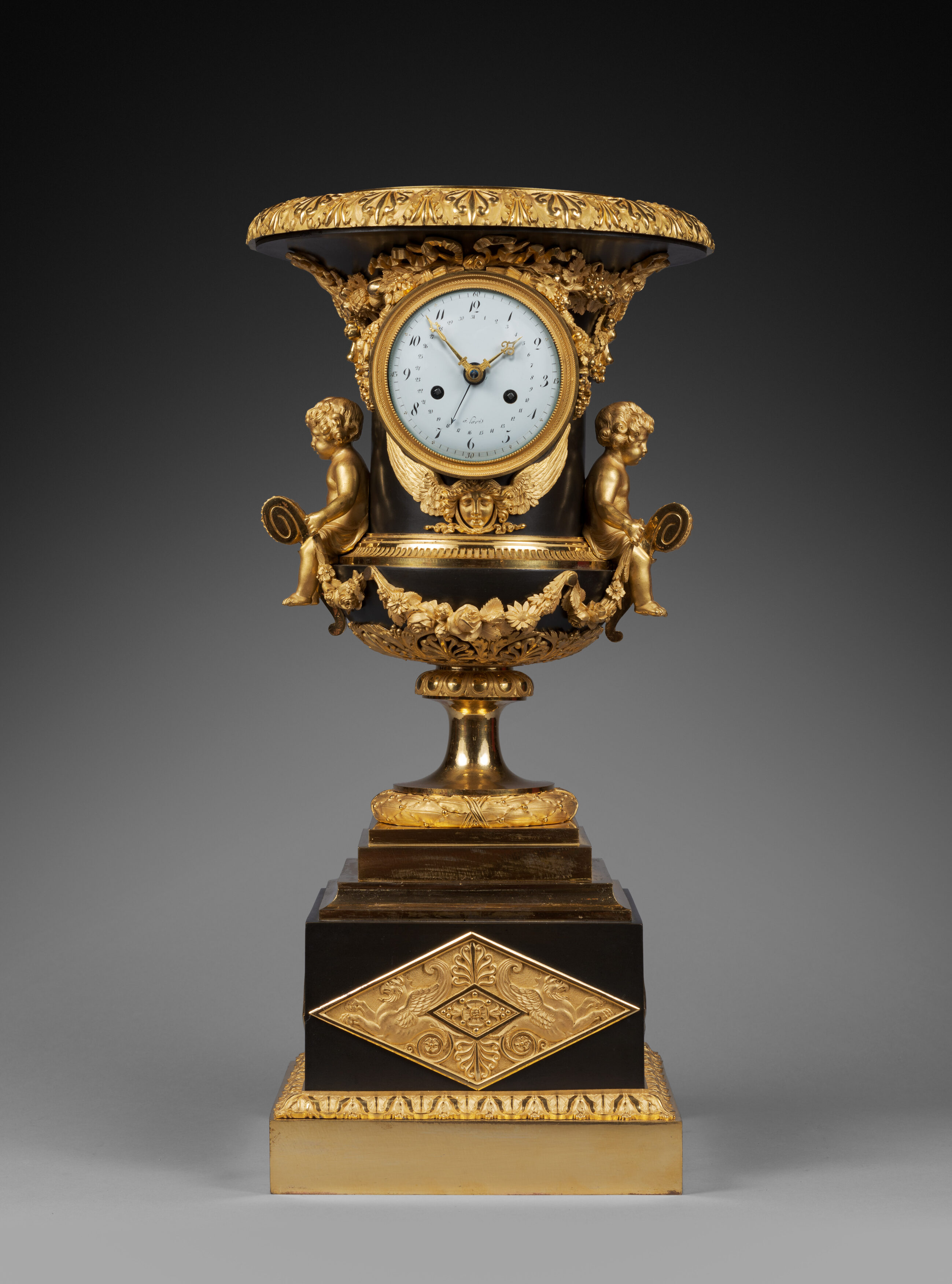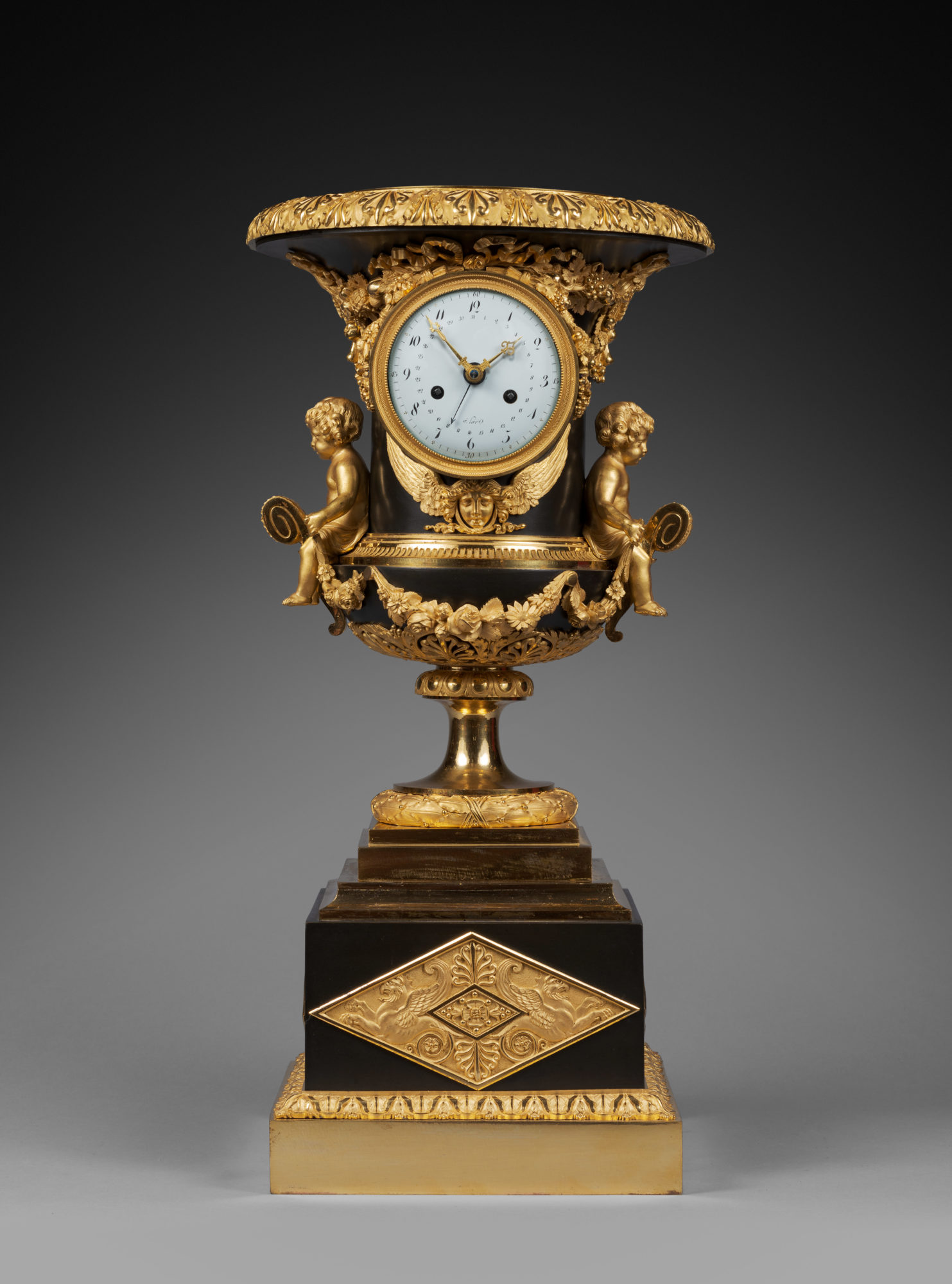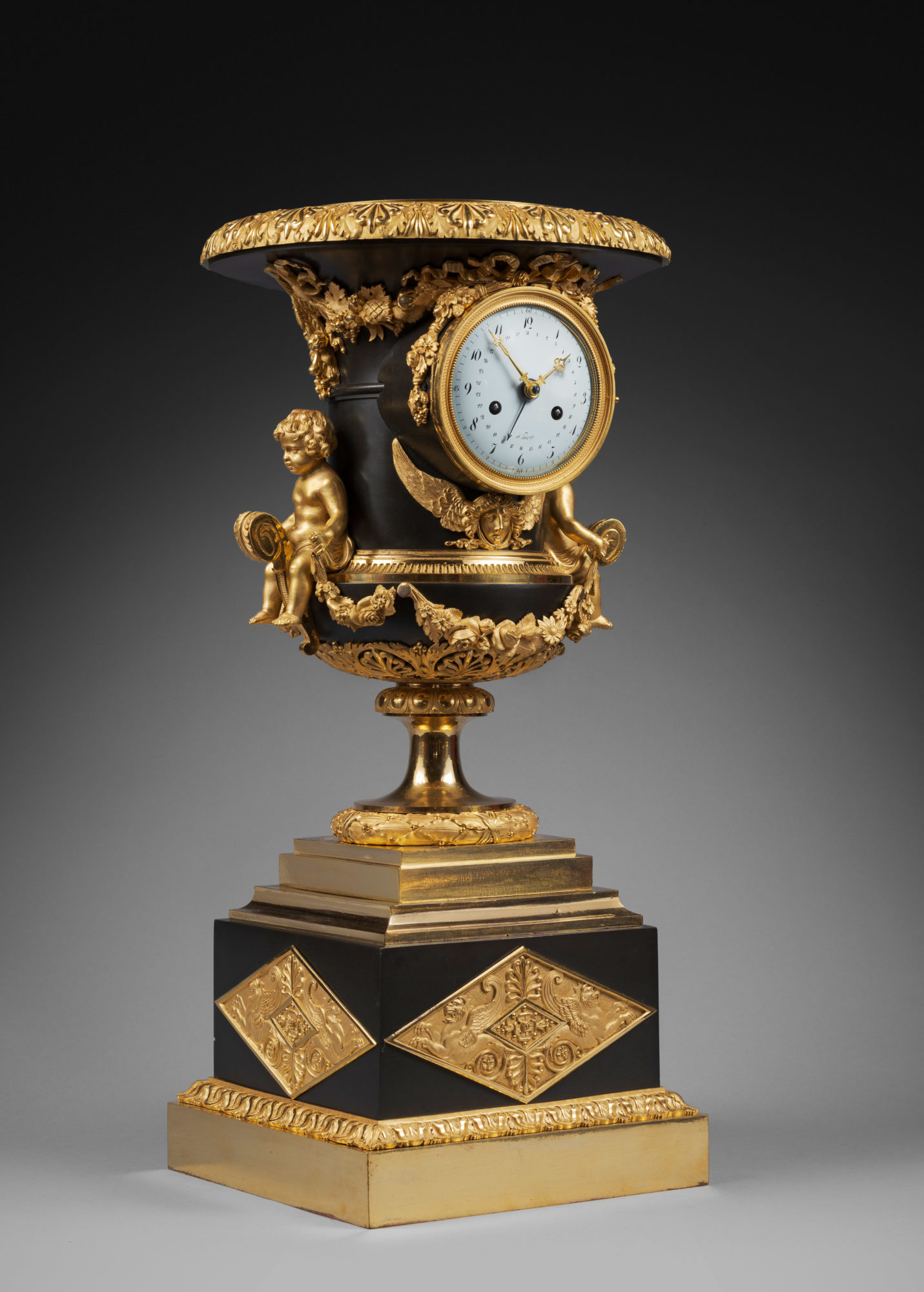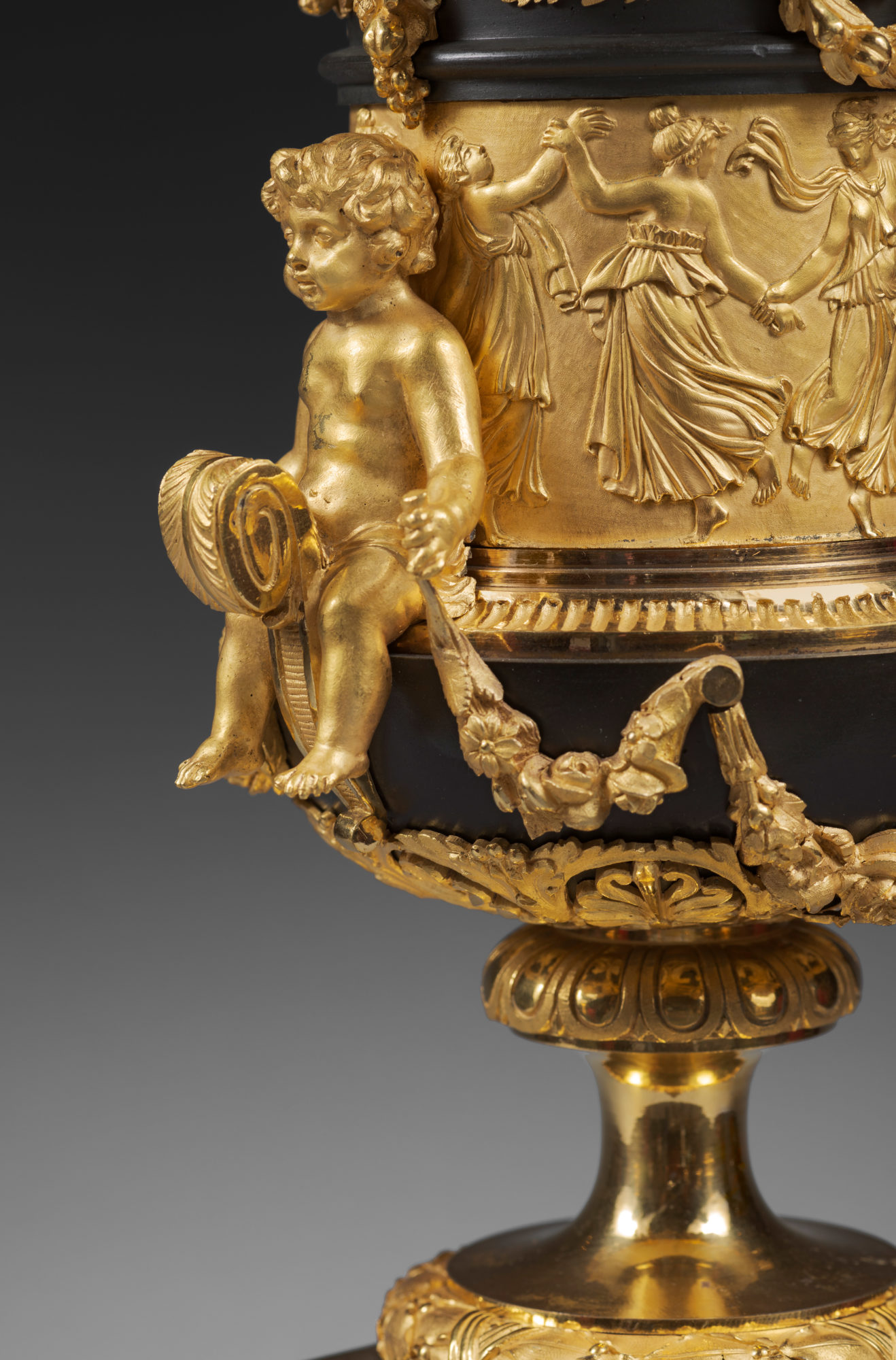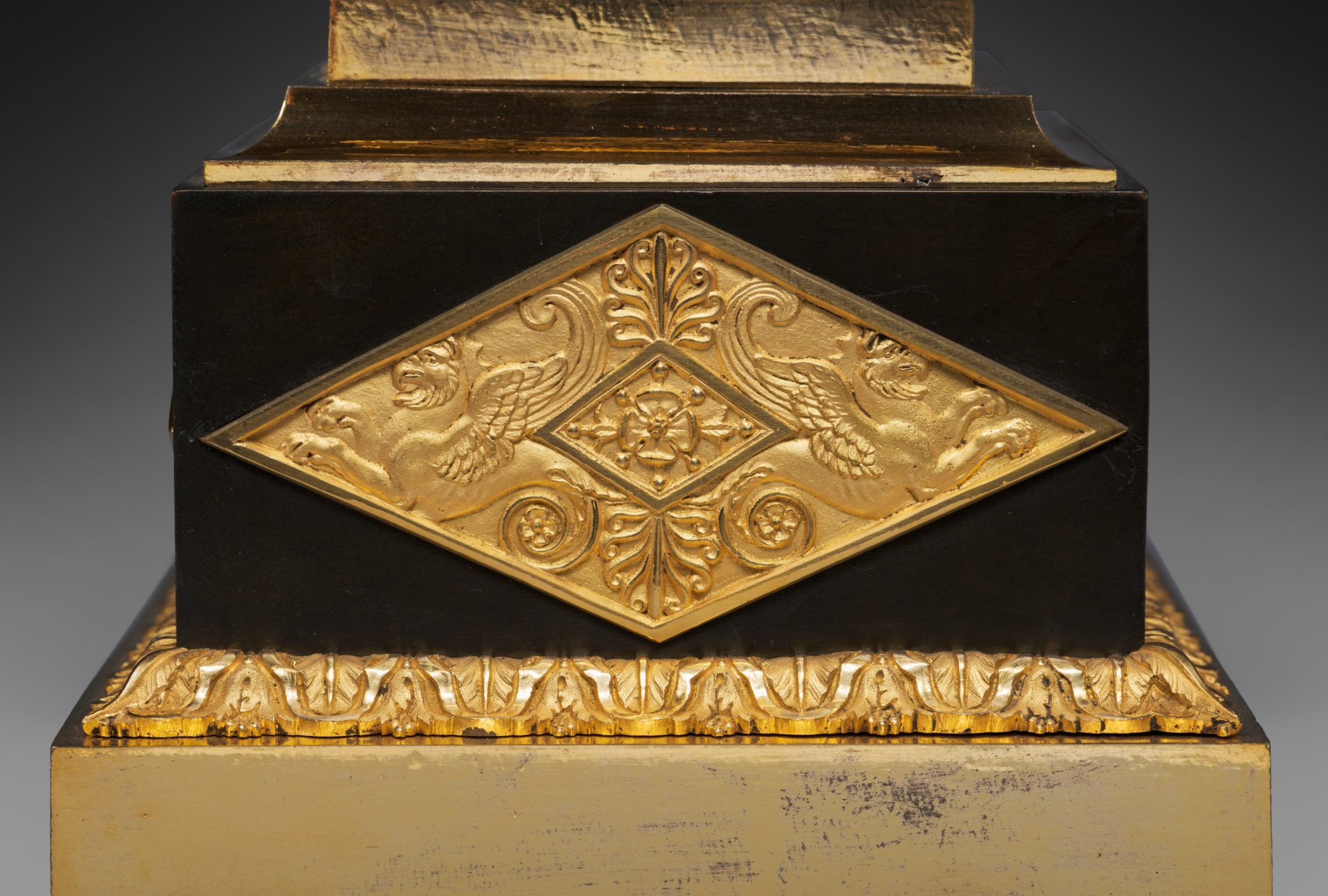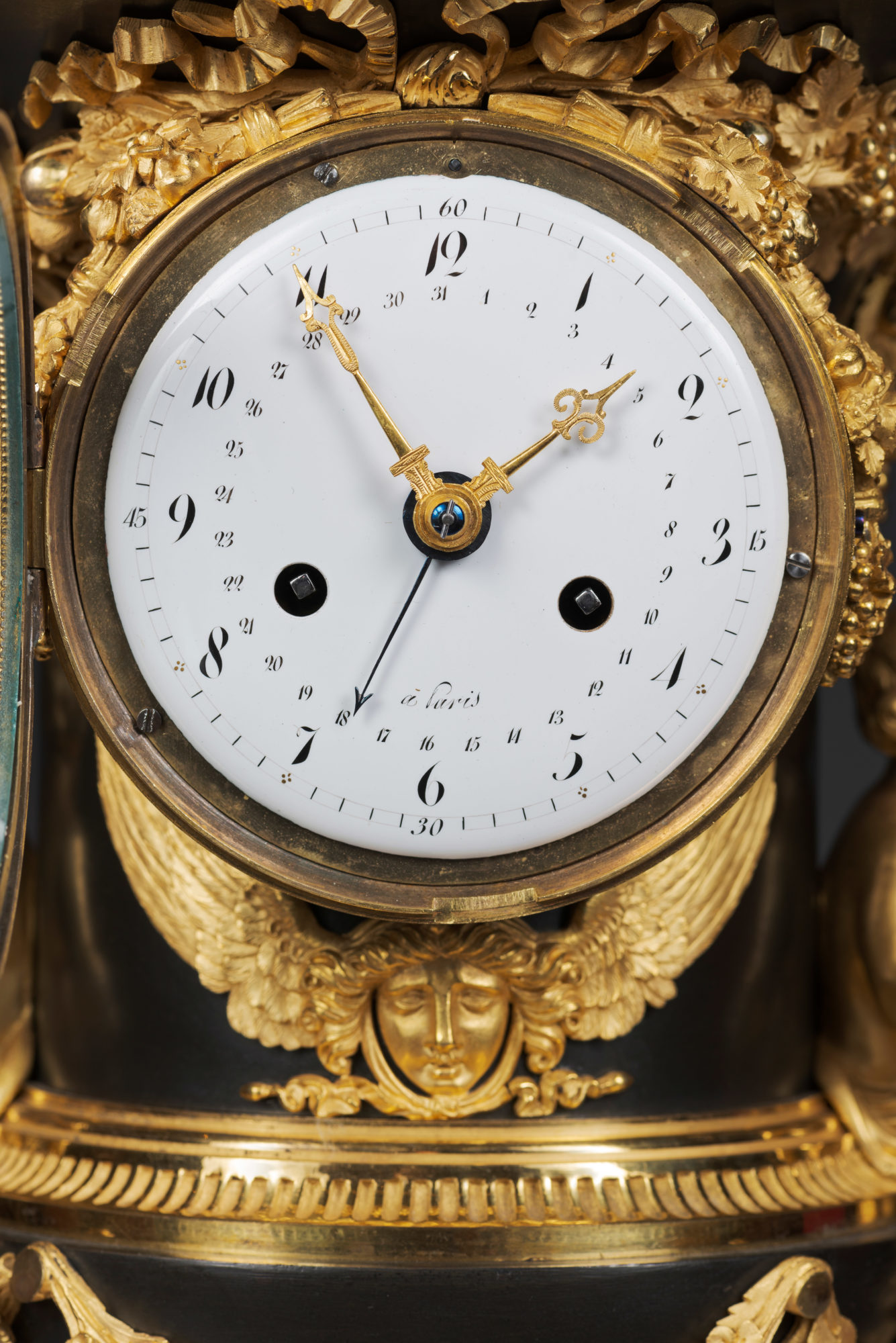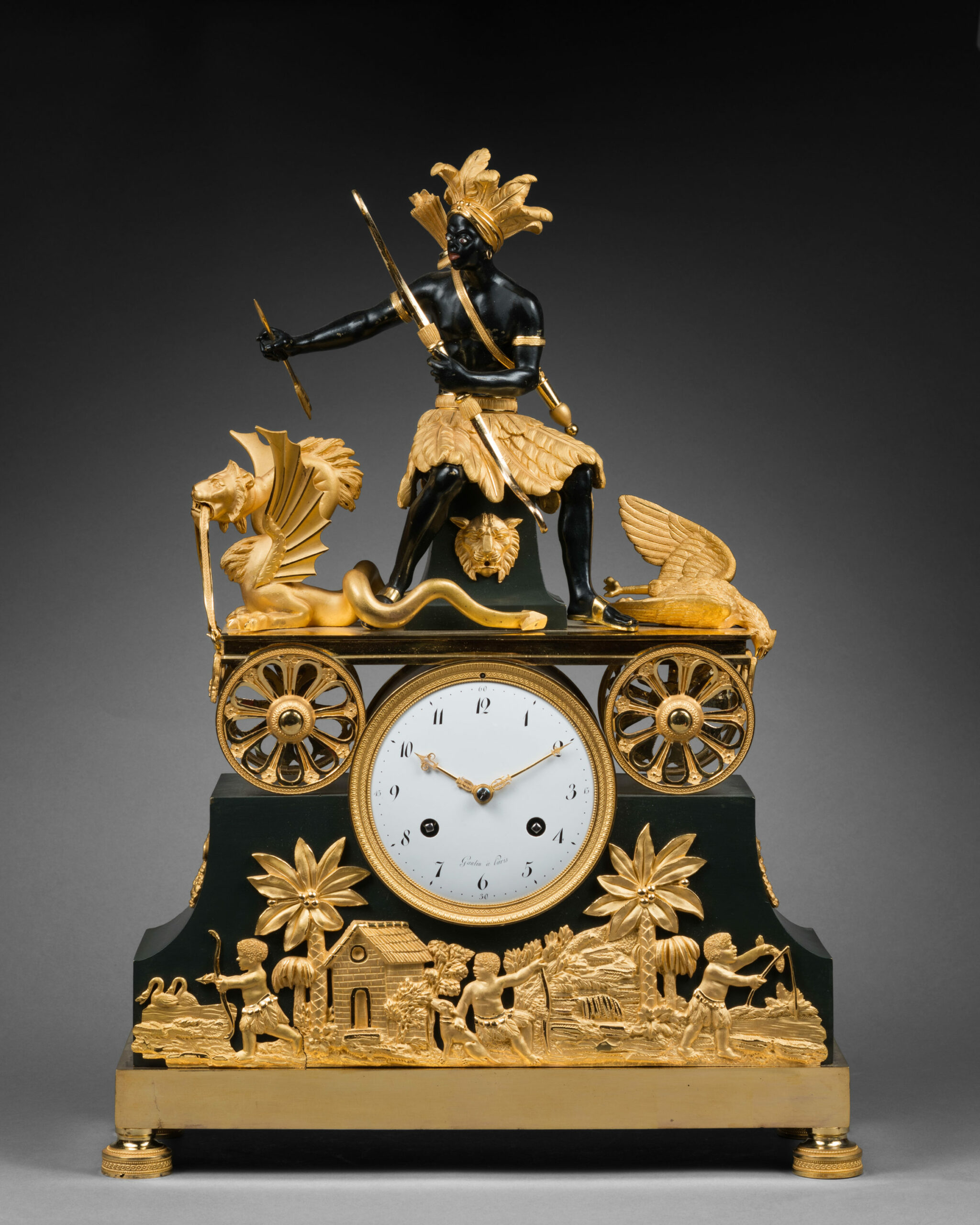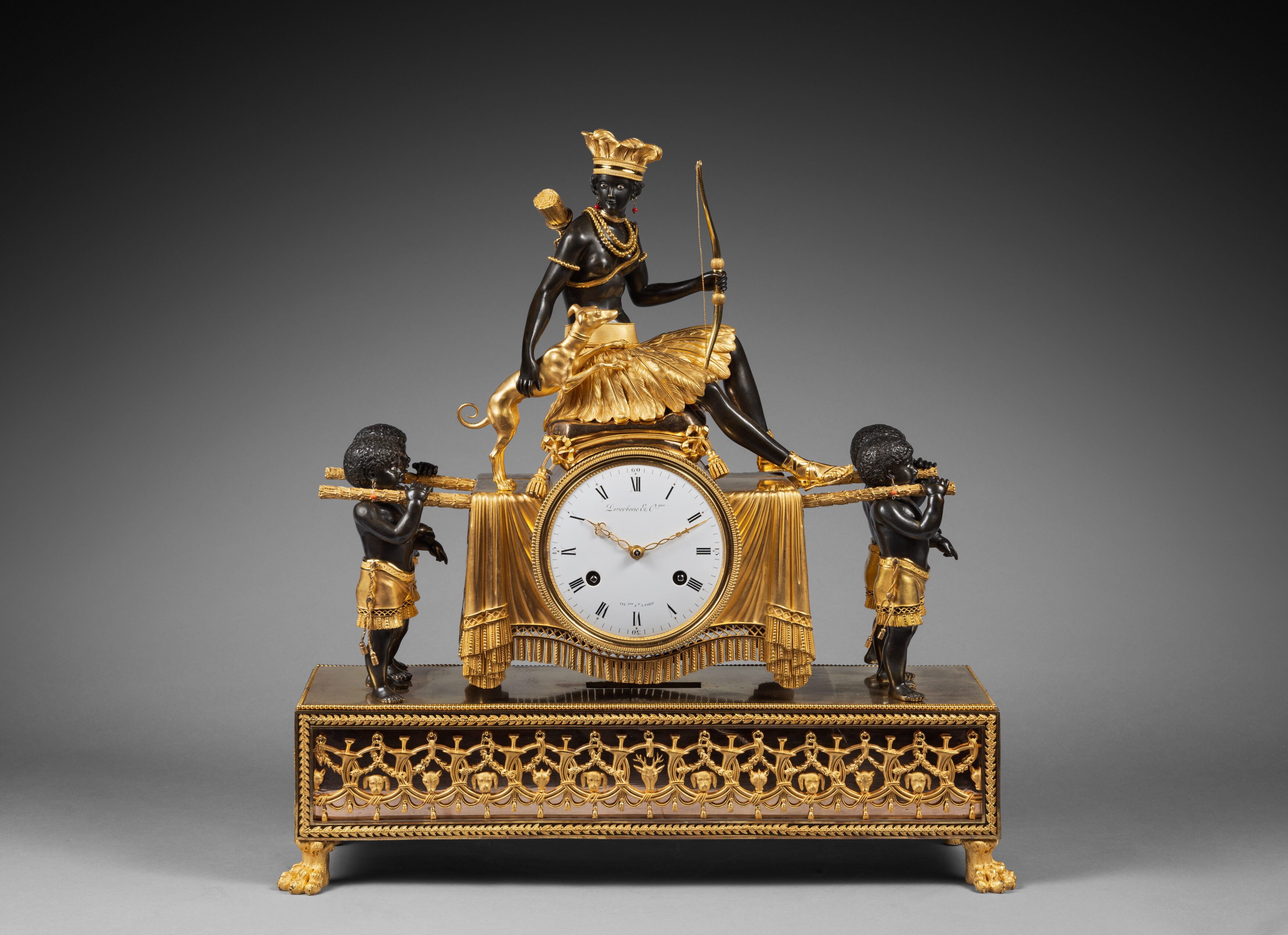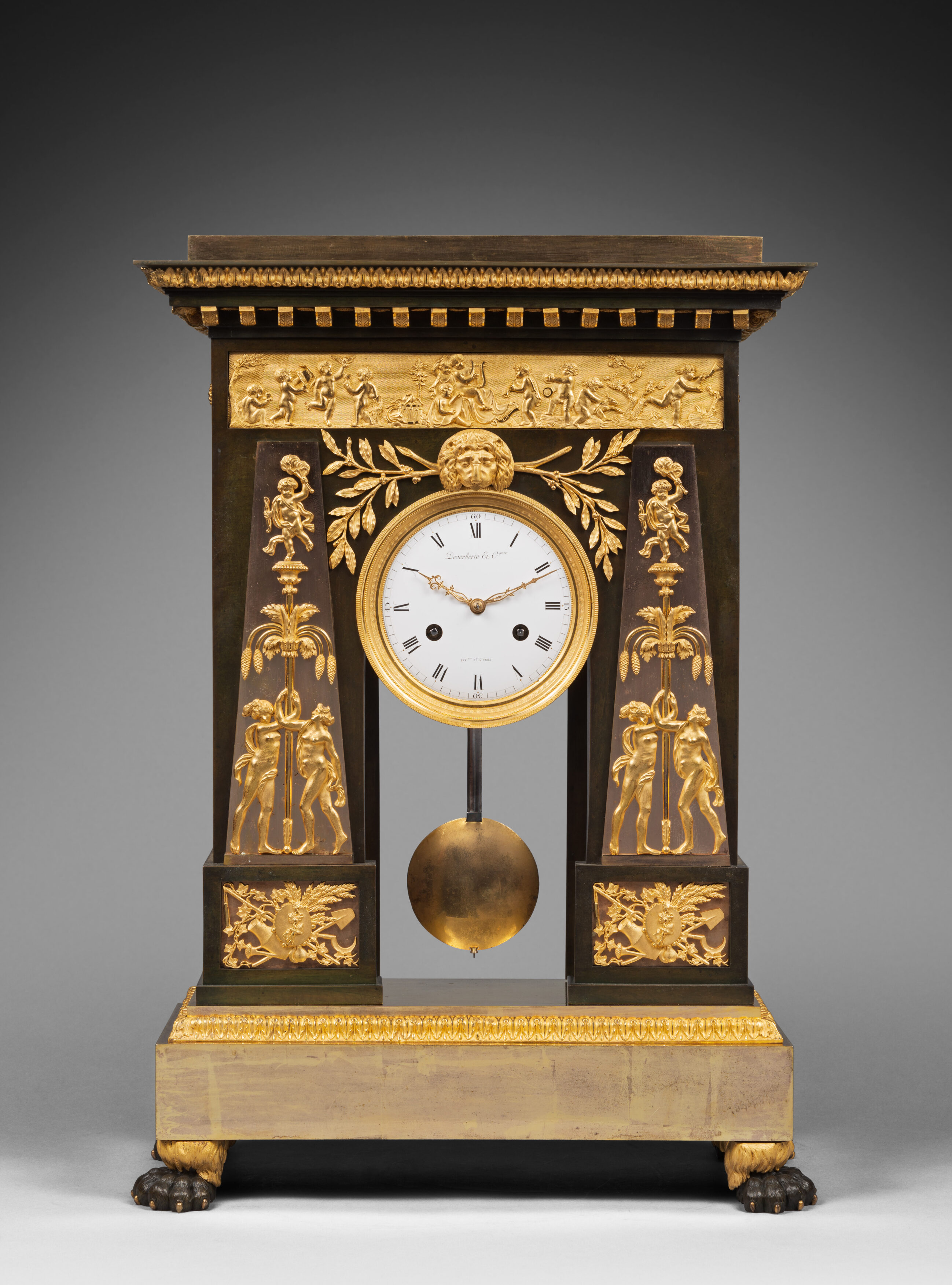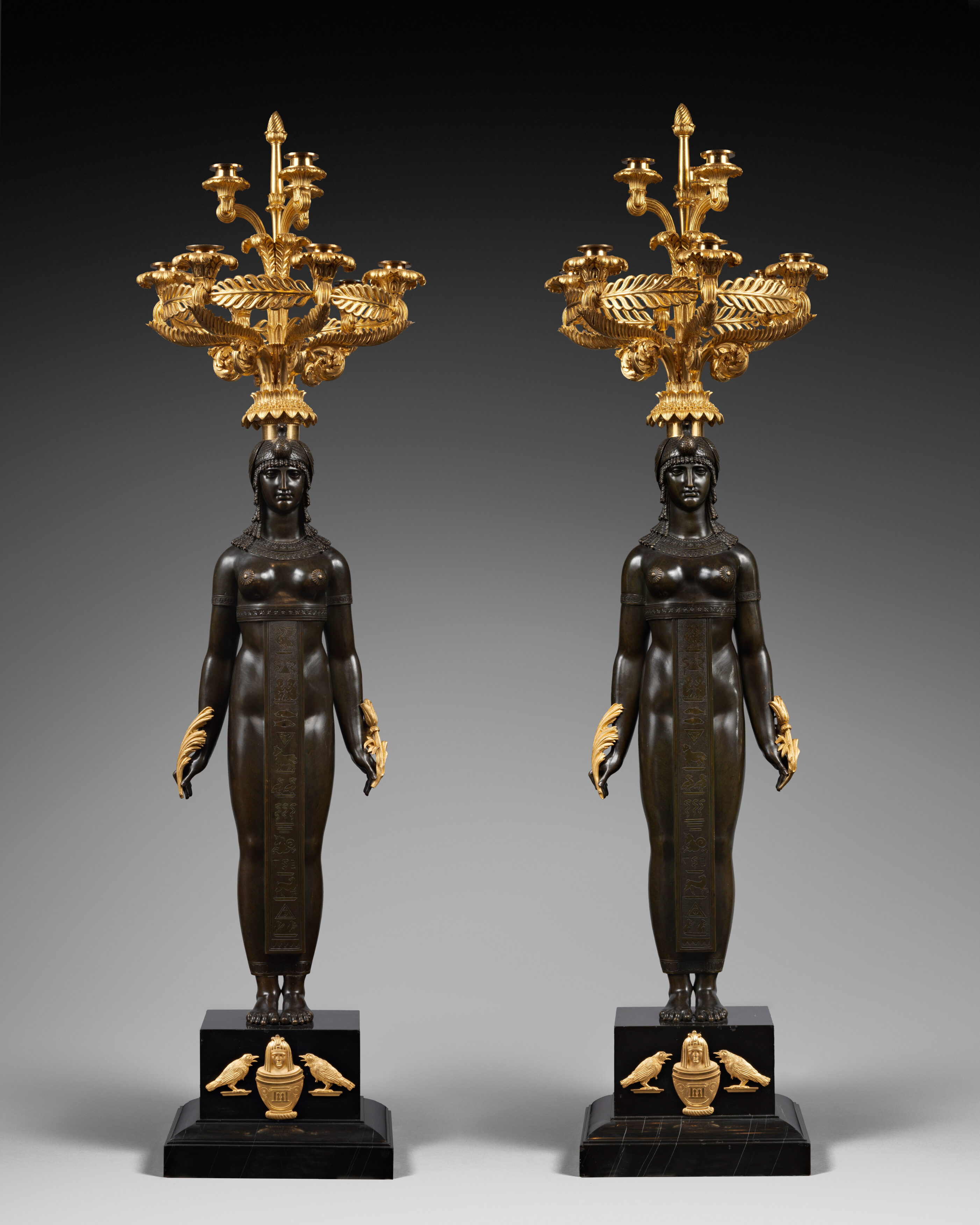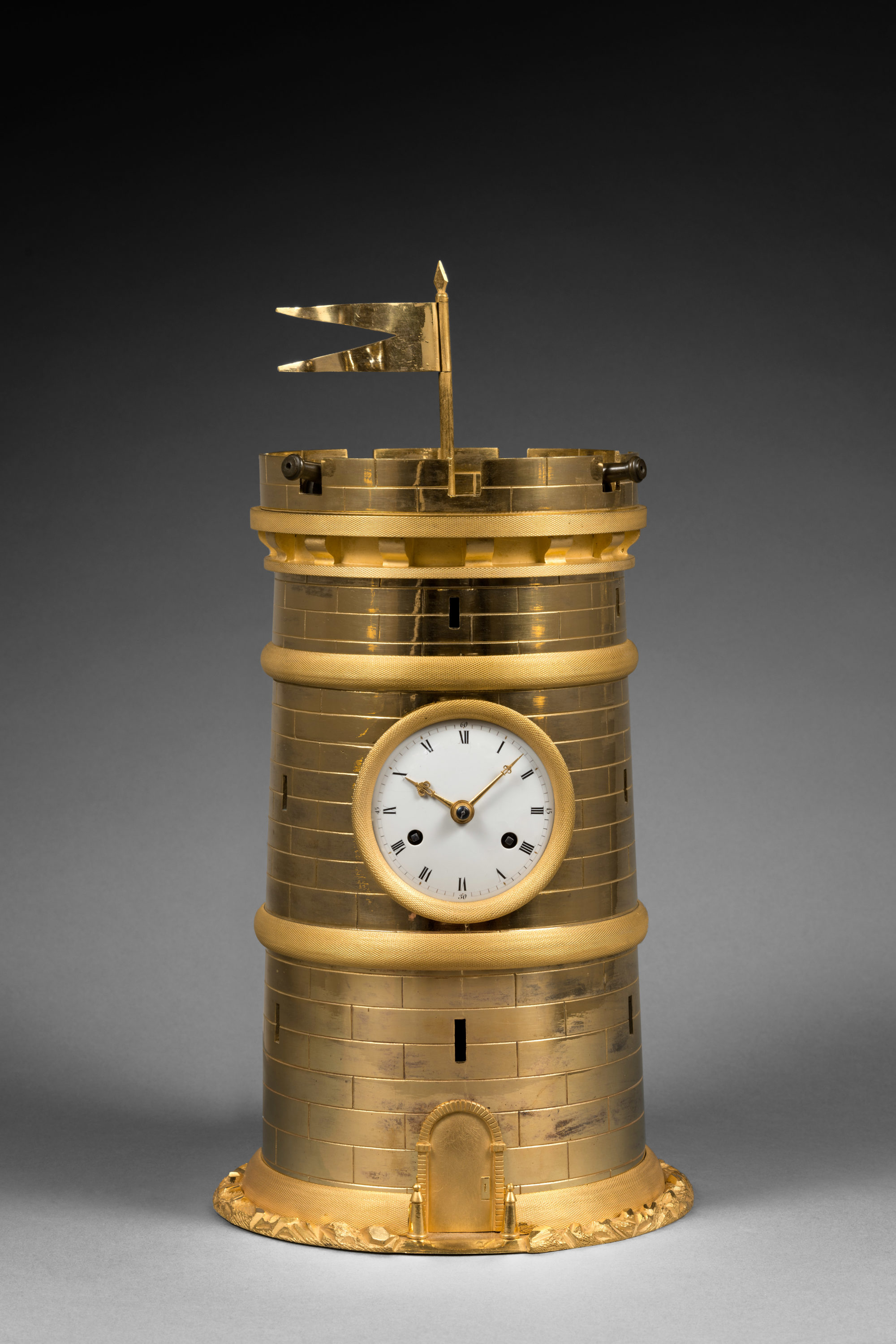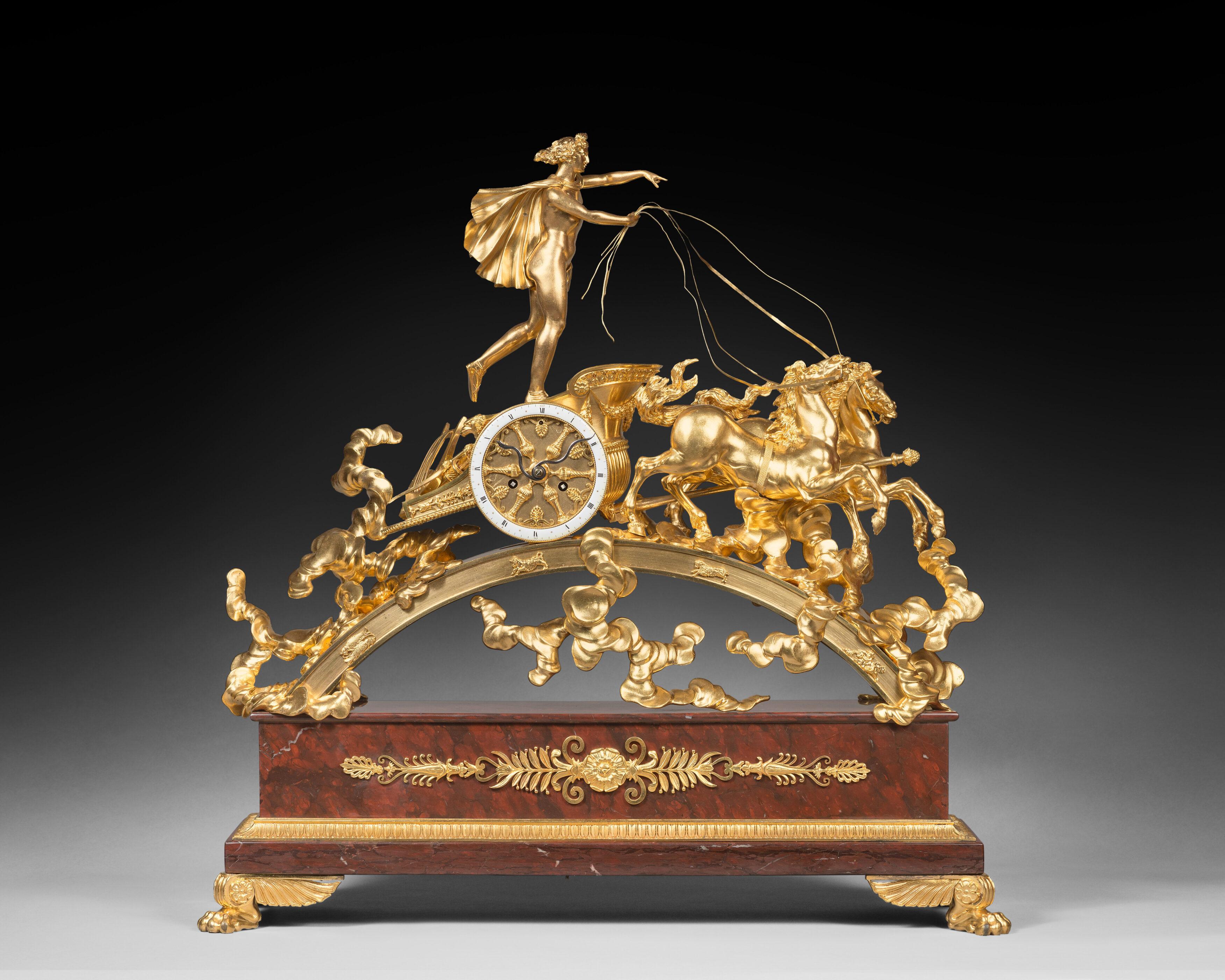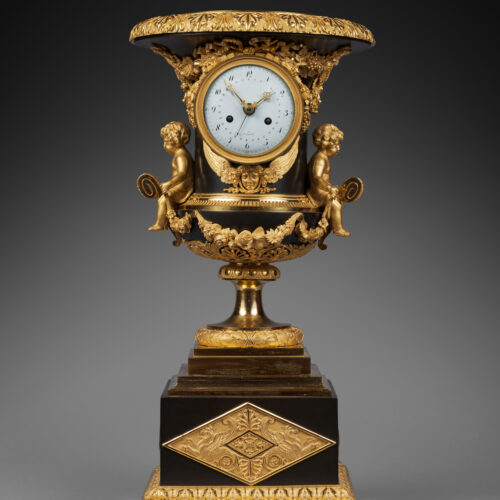Rare Vase-Form Mantel Clock in Gilt and Patinated Bronze with Matte and Burnished Finishing
“Putti astride the Handles”
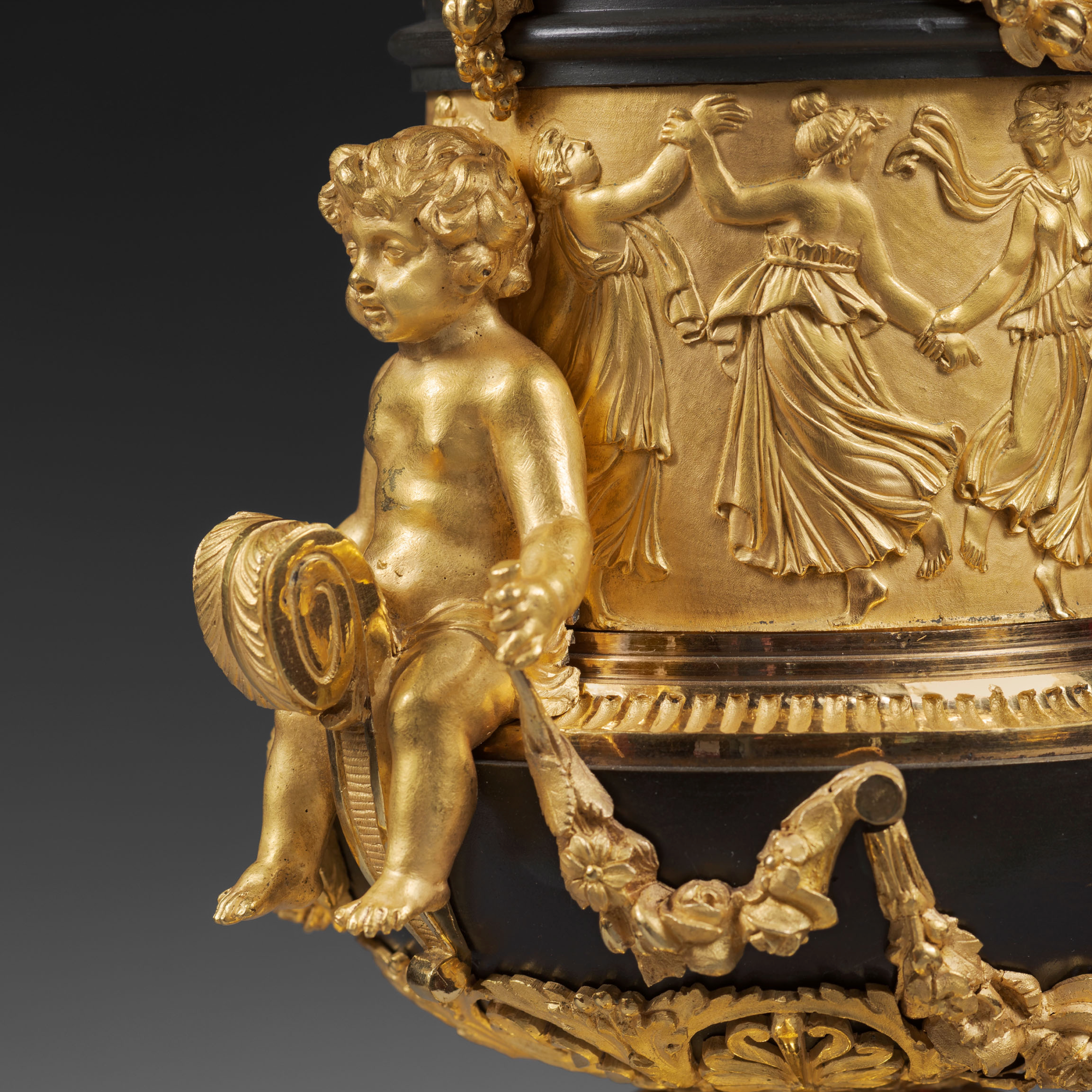
Attributed to Pierre-Philippe Thomire
Paris, Directory-Consulate period, circa 1800
The present mantel clock is made entirely of finely chased gilt and patinated bronze with matte and burnished finishing. The clock has a white enamel dial that indicates the Arabic numeral hours, fifteen-minute intervals and date, by means of three hands, two of which are made of pierced and gilt bronze. The hour and half hour striking movement is housed in a case in the form of a Medici vase. It is made of finely chased gilt and patinated bronze with matte and burnished finishing. The lip is decorated with a frieze of alternating stylized palmettes, oak leaves, and C scrolls; the upper part of the dial is adorned with ribbon-tied flower and leaf garlands; its lower portion is adorned with a mask flanked by outstretched wings; the scrolling handles support two putti who are seated astride the handles and hold leaf garlands that continue over the belly and are suspended from roundels. The lower portion is decorated with acanthus leaves and palmettes; the pedestal is adorned with a knop with stylized motifs and a ribbon-tied leaf and seed torus. It is set on a stepped entablature, which itself is set on a quadrangular base with a double lozenge motif that contains rosettes, palmettes, and facing griffons. The molded plinth features a frieze of lambrequins and water leaves alternating with foliage.
Discover our entire collection of antique mantel clocks for sale online or at the gallery.
La Pendulerie is the specialist in fine and rare antique clocks, based in Paris.
The remarkable design of this clock, and particularly that of the putti sitting astride the handles, as well as the exceptional quality of the chasing and gilding, are characteristic of the finest Parisian creations of the late 18th and early 19th centuries. While they have several features that are reminiscent of Louis XVI vases, including the magnificent toruses adorning the pedestals, and the flower and leaf garlands, they also present characteristics of the greatest creations of the Empire period, concerning, for example, the treatment of the chasing and the motifs of the bases. The harmonious and balanced blend of these two styles is typical of the transition period, in which the artistic and decorative tendencies came together during the passage from the 18th to the 19th century, that is, from the Directory to the Consulate period. During this period, one bronze caster in particular became famous for his talent and his creative genius: Pierre-Philippe Thomire, the remarkable artisan to whom we attribute the present clock. Thomire’s signature appears on a rare Medici vase made of gilt and patinated bronze, whose lip is similarly treated and whose belly features a comparable classical-style frieze. This vase, which is in the Decorative Arts Museum of Budapest, is illustrated in H. Ottomeyer and P. Pröschel, Vergoldete Bronzen, Die Bronzearbeiten des Spätbarock und Klassizismus, Band I, Munich, 1986, p. 362, fig. 5.12.3.
Pierre-Philippe Thomire (1751 - 1843)
Pierre-Philippe Thomire was the most important Parisian bronzier of the last quarter of the 18th century and the first decades of the following century. Early on in his career he worked for Pierre Gouthière, ciseleur-fondeur du roi, and toward the mid-1770’s began working with Louis Prieur. He later became one of the bronziers attached to the Manufacture Royale de Sèvres, creating the bronze mounts for most of the important creations of the day. After the Revolution, he purchased the stock of Martin-Eloi Lignereux, thus becoming the most important suppliers of furniture bronzes for châteaux and Imperial Palaces. In addition, he worked for a wealthy private clientele, both French and foreign, including several of Napoleon’s Marshals. Thomire retired in 1823.
